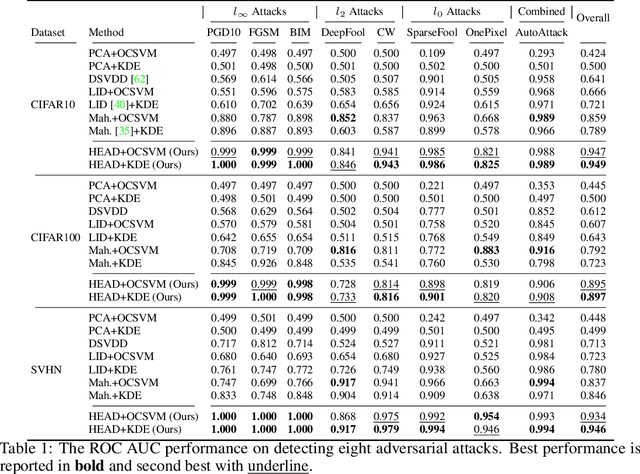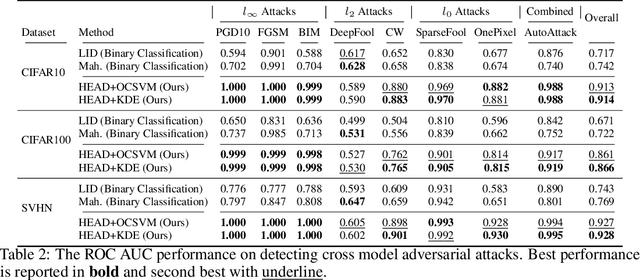Jay Billa
Attack-Agnostic Adversarial Detection
Jun 01, 2022



Abstract:The growing number of adversarial attacks in recent years gives attackers an advantage over defenders, as defenders must train detectors after knowing the types of attacks, and many models need to be maintained to ensure good performance in detecting any upcoming attacks. We propose a way to end the tug-of-war between attackers and defenders by treating adversarial attack detection as an anomaly detection problem so that the detector is agnostic to the attack. We quantify the statistical deviation caused by adversarial perturbations in two aspects. The Least Significant Component Feature (LSCF) quantifies the deviation of adversarial examples from the statistics of benign samples and Hessian Feature (HF) reflects how adversarial examples distort the landscape of the model's optima by measuring the local loss curvature. Empirical results show that our method can achieve an overall ROC AUC of 94.9%, 89.7%, and 94.6% on CIFAR10, CIFAR100, and SVHN, respectively, and has comparable performance to adversarial detectors trained with adversarial examples on most of the attacks.
 Add to Chrome
Add to Chrome Add to Firefox
Add to Firefox Add to Edge
Add to Edge